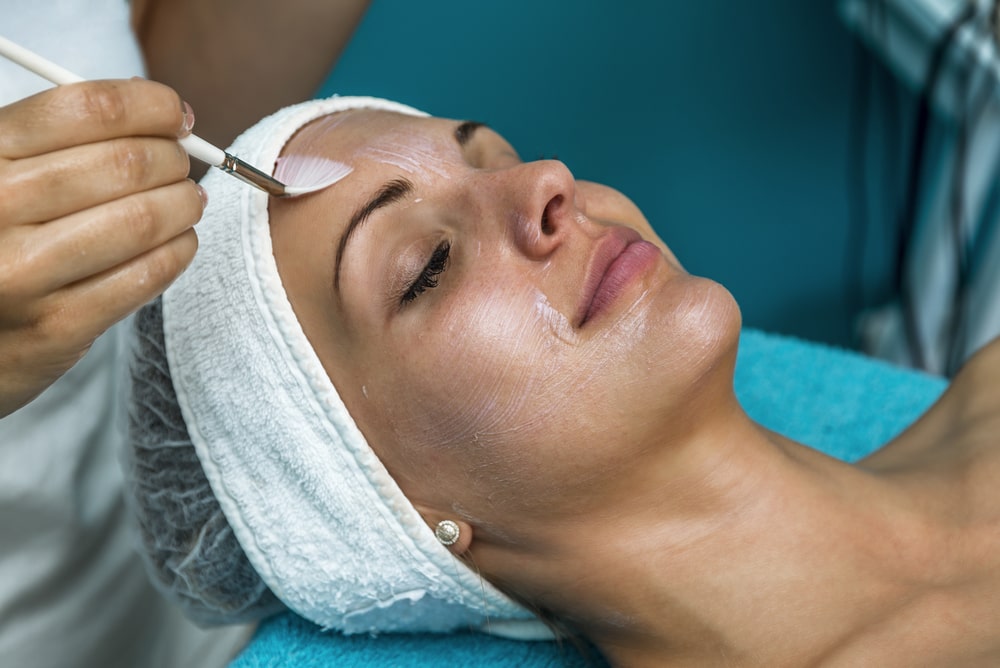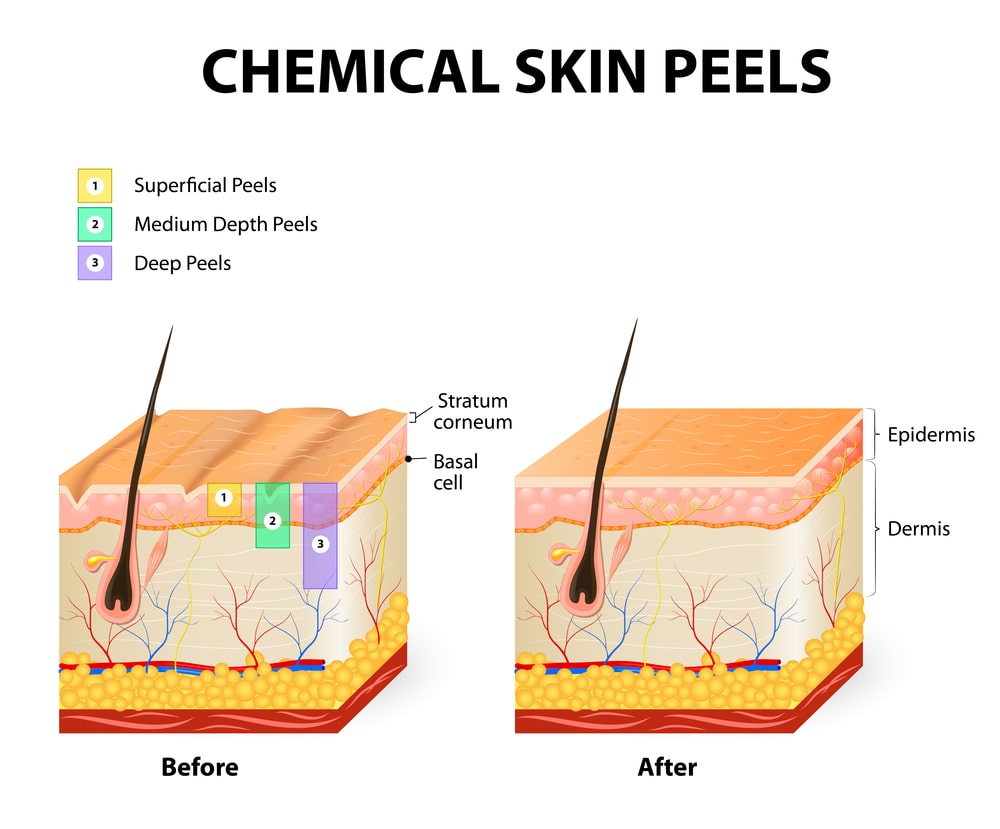Chemical Peel

A chemical peel is a skin-resurfacing therapy in which a chemical solution is applied to your skin for removing the affected top dermal layers. It can treat several skin concerns like acne, fine lines, wrinkles, scars, ageing, sun damage, hyperpigmentation and also melasma.
Dr. Ritesh Anand, a highly qualified cosmetic and plastic surgeon in Delhi with 16 years of work experience, can provide you with an excellent chemical peel for acne, age spots, wrinkles, etc. He employs the most advanced treatment technologies to ensure the success of his treatments with the best possible results. Heres all you need to know about chemical peels.

Types of Chemical Peels
Superficial Chemical Peel
It’s a light chemical peel for removing the epidermis (outer skin layer). It can treat acne, fine wrinkles, irregular skin pigmentation and dryness. You might be recommended a superficial chemical peel every 2-5 weeks as per your wished results.
During a light chemical peel:
- The doctor would apply a chemical solution of salicylic or glycolic acid using a cotton ball, sponge, brush or gauze. The treated skin would start whitening.
- You might feel slight stinging while the chemical solution stays on your skin.
- The doctor would then apply a neutralizing solution on your skin for removing the chemical solution.
Medium Chemical Peel
It helps in removing skin cells from the epidermis and parts of your upper-middle skin layer (dermis). These peels can treat wrinkles, acne scars and uneven skin tone. You can repeat it after 3-9 months to maintain results.
During a medium chemical peel:
- The doctor would apply a chemical solution of trichloroacetic acid (or often combined with glycolic acid) with a cotton ball or gauze. Your treated skin would start whitening.
- After a while, he would soothe the treated skin with cool compresses. A hand-held fan may also help cool your skin. No neutralizing solution is required.
- You might feel stinging or burning for around 20 minutes.
Deep Chemical Peel
It peels off skin cells from the epidermis and portions of the middle to lower dermis. The expert would recommend it if you have deep scars, wrinkles or precancerous growths. This peel is applied only once.
During a deep chemical peel:
- You are offered IV (intravenous) fluids. Your heart rate is monitored closely.
- The doctor would apply carbolic acid using a cotton-tipped applicator on the skin. Your treated skin would begin to turn greyish or white.
- To limit exposure to phenol, the treatment would be done in parts with 15-minute intervals or so. A full facial procedure might need approximately 90 minutes.
Is a chemical peel good for skin?
Chemical peels can enhance your skins appearance. This therapy involves applying a chemical solution to the skin causing it to blister and finally peel off. Your new skin is generally less wrinkled and smoother than the old skin. Therefore chemical peels are not only good for your skin but also beneficial for your stubborn skin issues.
Chemical peels can be done on the face, hands or neck. They can be used to:
- Reduce fine lines and wrinkles under your eyes and around your mouth.
- Treat wrinkles caused by ageing and sun damage.
- Treat specific types of acne.
- Treat hyperpigmentation of your skin.
- Promote the appearance of mild scars.
- Redness or uneven skin tone.
- Reduce dark patches, freckles and age spots from melasma because of pregnancy or even having birth control pills
How much does a chemical peel cost?
Each session of chemical peel costs around 1,500-10,000 INR on an average in India depending on the type and complexity of the peel suiting your specific requirements.
Are chemical peels dangerous?
Chemical peels are not dangerous and are safe as long as the right solution is being used suiting your skin type and requirement.
Medium and deep peels may cause swelling, reddening and blisters turning brown, crusting, breaking and peeling that subside after 1-2 weeks.
After treatment, wearing bandages for several days on parts of or your whole treated skin lowers risks of harmful exposures.
Apply a broad-spectrum (above SPF 30) sunscreen. Avoid the sun for some months because your new skin would be fragile.
Some skin types can more likely develop a permanent or temporary colour change in the skin after having a chemical peel therapy. If you have a family history of brownish facial discolouration or had subsequent pregnancy or used to take birth control pills, subsequent pregnancy increases the risk of such changes in skin colouration.
The risk of scarring is low in specific areas of your face. Some patients may be more likely to undergo scarring. If scarring happens, it can generally be treated with effective results.
If you have a history of herpes outbreaks, you may undergo the reactivation of cold sores as a small risk. Then the doctor may prescribe medication to treat or prevent it.